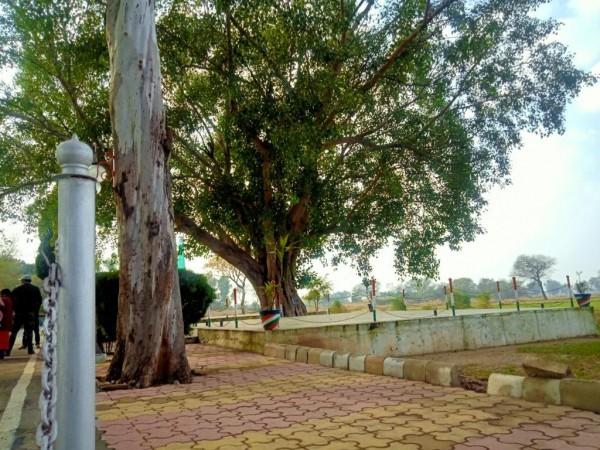'Struck' between the man-made border lines, a unique 'Peepal tree' on the 'Zero-Line' of Indo-Pak border in Suchetgarh area of RS Pura sector in Jammu and Kashmir, is a silent witness to 'sweet and sour' relations between the two neighbouring countries.
This giant tree is unique as its roots as well as branches spread across both the countries and half of its trunk is in India and the remaining part is in Pakistan.
As 'Peepal'- which is also known as 'Sacred Fig', releases oxygen round-the-clock unlike many other plants, border-dwellers of both India and Pakistan are taking benefit of this huge plant during the second wave of Coronavirus.
Most of the plants' uptake Carbon dioxide (CO2) and release oxygen during the day through a process called photosynthesis and uptake oxygen and release CO2 during the night through respiration. But plants such as 'Peepal' uptake CO2 during the night as well because of their ability to perform a type of photosynthesis called Crassulacean Acid Metabolism (CAM).

A silent witness to 'bloody' partition
Prior to the partition in 1947, Suchetgarh was an important railway station between Jammu and Sialkot (now in Pakistan). Suchetgarh was the last village in the territory of then Dogra ruler of the erstwhile state of J&K and, thereafter, undivided Punjab began with Sialkot as an important trade hub of that time. An octroi post was set up during the British era at the same spot. During summer, passengers used to take a rest under the shade of this 'Peepal' tree before the partition.
As borders were drawn during partition, the 'Peepal' tree came into 'Zero-Line' and a pyramid-shaped pillar number 918 was erected, just near the tree, to demarcate the boundary. The concrete pillar, however, vanished within the broadening trunk of the tree with the passage of time. One can barely see that pillar over the years as the trunk of the large 'Peepal' tree has grown around it.

One portion of Peepal's trunk in India, remaining part in Pakistan
Interestingly during sunrise in the morning, the tree gives its shade in Pakistan and in the afternoon on the Indian side of the border. Both sides do not stake claim over the tree. Identical concrete platforms constructed on both sides of this tree are used for flag meetings between India and Pakistan.
The Pakistan Rangers sit on the Indian platform when the meeting is held on the Indian side and the BSF officers cross the borderline to meet at the platform on the other side of the tree, if the meeting is convened by Pakistan.

















